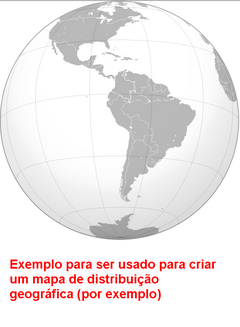Inga hayesii
| Inga hayesii | |||||||||||||||||||||||||||||||
|---|---|---|---|---|---|---|---|---|---|---|---|---|---|---|---|---|---|---|---|---|---|---|---|---|---|---|---|---|---|---|---|
| Ocorrência: (?) - Atualidade | |||||||||||||||||||||||||||||||
| Estado de conservação | |||||||||||||||||||||||||||||||
 Quase ameaçada | |||||||||||||||||||||||||||||||
| Classificação científica | |||||||||||||||||||||||||||||||
| |||||||||||||||||||||||||||||||
| Nome binomial | |||||||||||||||||||||||||||||||
| Inga hayesii Benth | |||||||||||||||||||||||||||||||
| Espécie-tipo | |||||||||||||||||||||||||||||||
| Inga hayesii Benth Nielsen, Rico, 1994 | |||||||||||||||||||||||||||||||
| Distribuição geográfica | |||||||||||||||||||||||||||||||
 Mapa de distribuição
| |||||||||||||||||||||||||||||||
| Sinónimos | |||||||||||||||||||||||||||||||
| [2][3] Feuilleea hayesii (Benth.) Kuntze;
Feuilleea hayesii; Inga hayesii Benth, 1875 | |||||||||||||||||||||||||||||||
Inga hayesii é uma espécie vegetal da família Fabaceae.
Conhecida popularmente (em castelhano) como Guamo, Guavo, Piva.[4]
Árvore pequena de floresta tropical úmida, semi-decídua, e com folhas pinadas,[5] segundo o CEP (Centro de Estudos e Pesquisas).
Segundo International Union for Conservation of Nature and Natural Resources, a Inga hayesii foi encontrada inicialmente só no Panamá, mas atualmente é também encontrada Nicarágua, Costa Rica, Panamá, Colômbia, Equador e Peru em pouca quantidade nas planícies de floresta úmida secundária e semi-decídua, em áreas fora das reservas de proteção ambiental.
Segundo BODC (British Oceanographic Data Centre), que fez 19 observações entre 0 e 3.028 metros de altitude e uma média de 486 metros.
Identificadores
[editar | editar código-fonte]- Biodiversity Heritage Library NamebankID: 2838440
- Catalogue of Life Accepted Name Code: ILD-13551
- CEP ID:
- Global Biodiversity Information Facility Taxonkey: 13636777
- Globally Unique Identifier: urn:lsid:ipni.org:names:500485-1
- GRIN Nomen Number: 415175
- Integrated Taxonomic Information System (ITIS) Taxonomic Serial Number (TSN):
- International Plant Names Index (IPNI) ID: 128532-2
- IUCN ID: 30605
- MoBot NameID:
- Natural Heritage Network Species Identifier:
- U.S.D.A. Plant Symbol:
- Zipcode Zoo Species Identifier: 402057
Referências
- ↑ Haeckel, Ernst Heinrich Philipp August (1866). Generale Morphologie der Organismen. Berlin: Verlag von Georg Reimer. pp. vol.1: i–xxxii, 1–574, pls I–II; vol. 2: i–clx, 1–462, pls I–VIII
- ↑ SCHERY, R. W. (1950). Annals of the Missouri Botanical Garden. St. Louis: 37 (2): 184-314 Leguminosae-Mimosoideae.
- ↑ Catalogue of Life - Plant Sciences The University of Reading
- ↑ MITRÉ 1998. Inga hayesii. In: IUCN 2010. IUCN Red List of Threatened Species. Version 2010.1. Inga hayesii. Dados em 10 de abril de 2010.
- ↑ Catálogo da Coleção Botânica do CEP (2001). São Paulo: editora HMP
- BENTHAM, G. 1875. Revision of the suborder Mimoseae. Trans. Linn. Soc. London 30:335-668
- «BODC - British Oceanographic Data Centre»
- BRITTON & ROSE, J.N. (1928) N. Amer. Fl. 23 (1): 1-76 Mimosaceae
- BUCK & GOFFINET. (2000). "Morphology and classification of mosses", pages 71–123 in shaw & GOFFINET (Eds.), Bryophyte Biology. (Cambridge: Cambridge University Press). ISBN 0-521-66097-1.
- CROAT (1978) Stanford Univ. Press Fl. Barro Colorado Island
- D'ARCY (1987) Monogr. Syst. Botany Missouri Botanical Garden. Flora Panama.
- ELIAS, T.S. (1968). Annals of the Missouri Botanical Garden. St. Louis: 55 (1): 72-73 Notes on… Inga. II
- «IAC (Instituto Agronômico de Campinas)». . Dados em 10 de abril de 2010
- LEON, J. (1966) Central American and West Indian species of Inga (Leguminosae). Annals of the Missouri Botanical Garden. St. Louis: 53:316 (53: 265-359).
- MARGULIS, L. (1974). «Five-kingdom classification and the origin and evolution of cells». Evolutionary Biology. 7: 45–78
- «New York Botanical Garden». . Dados em 10 de abril de 2010.
- PENNINGTON, Terry 1997. The genus Inga, botany. (Inga) 626.
- PITTIER, H. (1916) Contr. U.S. Natl. Herb. 18: (5): 173-223 Prelim. Revision of Inga
- PITTIER, H. (1929) J. Dept. Agric. Porto Rico 13 (4): 116-176.. Middle American Inga
- SCHERY, R. W. (1950) Annals of the Missouri Botanical Garden. St. Louis: 37 (2): 184-314 Leguminosae-Mimosoideae.
- SOUSA, Mario S. (1993). El genéro Inga (Leguminosae: Mimosoideae) del Sur de Mexico y Centroamerica, estudio previo para la Flora Mesoamericana. St. Louis:. 80:245 (80: 223-269).
- URIBE-URIBE, L. (1946) Caldasia 4 (18): 211-213 Adiciones a las Legum. de Colombia
- «Vegetabilia in the free dictionary»

